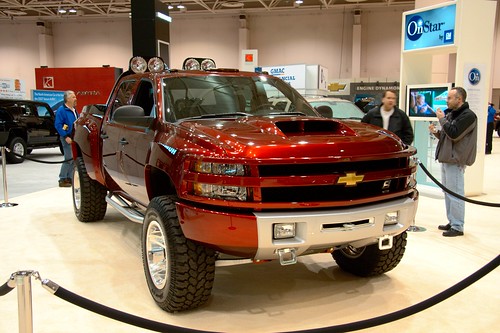In the United States of America, there are about 246 million cars, down from 250 million. 2010 saw a decrease in cars as economic hard times set in. So, what cars are Americans buying? What car brands make up that 246 million? Here’s a look at the Five Families of Car-Making in America.
#1 The most popular brand of car right now is Ford. Their famous F-series has sold more units (264,079) in 2011 so far than any other type of vehicle, 80,000 more than the next most prolific car of the year, the Chevrolet Silverado.
#2 Chevrolet’s Silverado (notice the domestic trend in popularity) sold 180,000 units in the first half of 2011, making Chevrolet’s #2 spot somewhat of a mystery, given its gas-mileage and cost. However, Chevrolet has a handful of their cars on the top 25 cars of 2011–proof that they know how to make a car people like.
#3 Toyota double-tapped the list, with the Camry listed as the third-best selling car of 2011 and the Corolla as the fourth. Critics doubted that Toyota would fully recover from the safety scandal a few years back and the subsequent Congressional inquest, but the Asian automaker has proven that they are still producing quality cars.
#4 Nissan, usually a second-tier manufacturer, jumped into the Top 5, beating out Honda as the fourth most bought car brand with their well-marketed Altima. The Altima sold more than 131,000 units in the first six months of 2011.
Honda, usually a staple of the Top 5, comes in as last of the bunch with the old and reputable Civic, which sold 127,000 units. (To give Honda their due, the Accord is #6 out of the Top 25.) Honda, known for good service and cars with great gas mileage and longevity, has slowly lost ground in recent years, replaced with up-and-comers like Nissan.
What does this mean for drivers? First, domestic cars outsold foreign cars (bucking a long-standing popular trend). Domestic cars traditionally have lower gas mileage than foreign cars. However, in recent years, domestic automakers have worked to increase mileage to boost sales and environmental protection. Second, Toyota is quickly reestablishing themselves as an excellent upper middle-class car maker. Third, the general populace continues to look to save money on auto insurance by buying cars that qualify for lower rates (newer cars are safer, so rates are lower). Fourth, Honda continues to drop in popularity (the downward slope began in 2008). This could mean excellent chances for car-buyers to pick up quality cars for bargain prices. Fifth and last, these statistics show that the demand for cars–despite the drop in American’s fleet size–is still sizeable. America isn’t shifting away from personal vehicles any time soon.




